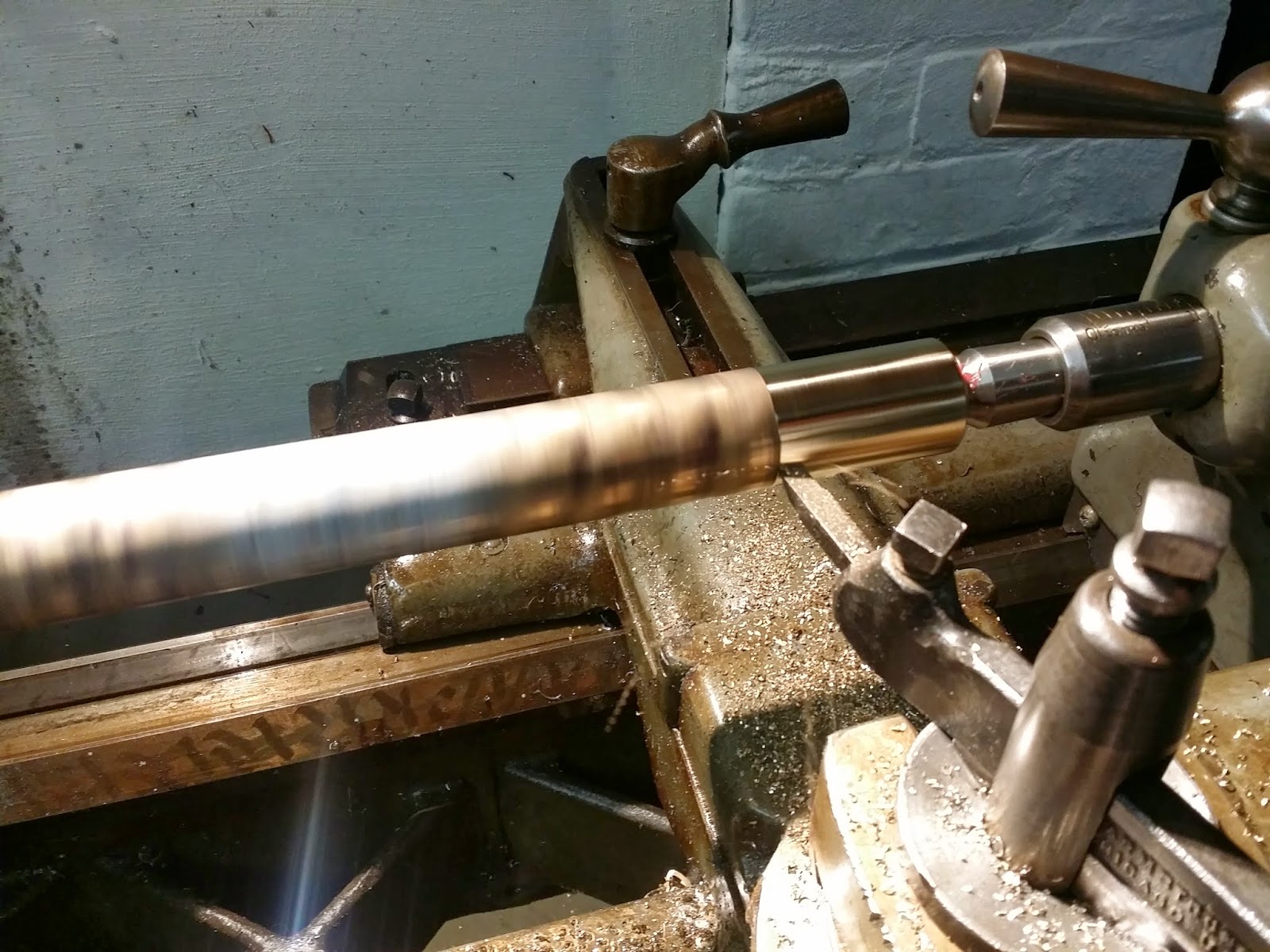I accomplished two things after work today. I managed to stitch weld my new subframe and take apart a spare shift linkage. As always, on to pics. I seriously don't think most of you read most of what I actually take the time to write. heh
Okay, since the pics uploaded in sort of reverse order, you get to see how to take apart the yoke on a shift linkage first.
So this is a flap wheel:
If you don't use these for cleaning and fab work, you are just plain nuts. They are better than the beave's knees. The only time I ever use normal grinding wheels is when I am doing really heavy grinding or cutting stuff (which I don't do much anymore since I have my portable band saw).
This is more of a side view showing how thick this particular disc is:
These things have a really mixed reputation. I can guarantee that the only people who speak badly of these things have used the cheap ones. I generally buy 3M, Norton and a couple of other decent name units.
Why would I spend up to $12 per disc? Two main reasons:
1. Durability. Generally, the thicker the disc, the longer lasting it will be. The problem with going thicker is that the attachment process must be more precise and just better to hold the higher mass together well. A good flap disc will last significantly longer than the cheap, Chinese ones you can get at HF and other low buck stores. You will get more than $12 worth of use out of one of these better discs. If you can catch them on sale on Amazon or eBay, you can score! Another brand to avoid is actually DeWalt, commonly sold at Homey Despot. While entirely better constructed than the HF discs, they last only a little bit longer and are EXTREMELY expensive for the amount of time you can use them. I'd rather you get the HF ones than those, as there is much better value to them.
2. Smoothness. You won't vibrate your hands into nerve damage. These things run smoother than just about anything else, absorb shock better, are balanced better and depending on the grit you use, will remove material almost as fast as a normal grinding wheel, which means less time grinding (also good for you hands and GSD (Getting Stuff DONE)!).
The only limitations to these are they they are not for edge use, unless you get a specific disc for edge use (they make them, I haven't used one yet). But, for anything flat, they rock. They give you unparalleled control so you can just smooth things over or you can honk down on them and really get the material moved. I love them. You should use them, too, IMO.
ANYWAY, here's the end of the shift linkage that causes most shifting headaches:
This is the other end, attached to the stock shift lever:
As you can see, all the plasticky bits are falling apart:
That's the bushing that fits into the end of the stock shift lever. The rubber o-rings, meant to dampen vibrations, are shot, and the thing just fell out when I unbolted the lever from the linkage.
Here are a couple of shots showing how rough the plastic sleeve is inside the end of the shift lever:
Just slap that in and call it good, right? No, thank you.
I missed a few photos, so bear with me while I explain some things. Take your flap disc equipped grinder and take down the pressed ends of the pins holding together the parts of the parts of the yoke like so:
Then pry the tabs apart and pop everything apart! It's really just that simple. Yes, you'll have to bend the tabs flat, but as long as you don't go overboard, that's totally fine. It's good steel, not aluminum.
This is another source of slop:
Those plastic bushings just plain wear out. The metal pins rust. Icky, icky, icky, and not good for your transmission at all, either!
The other end of the linkage, where it bolts to the bottom of the shift lever was pretty groady, so I took a knotted wire brush (mounted on the grinder) to it, so it went from this:
To this:
It will be getting painted after it is cleaned thoroughly.
Now, on to the subframe.
I took the aforementioned knotted wire brush and took off the gunk and as much of the paint as I could from strategic locations:
Then I fired up the trusty Lincoln MIG box:
And got my stitch weld on:
No, I didn't get any closeups. Some of the welds were nasty. What do you want for MIG welding through paint and crap? It's not that big a deal.
Now a word about doing this kind of stitch welding. The goal here isn't to go crazy. It's to tighten up the structure a bit. Avoid stitch welding corners. They are stiff enough and if you do that, you'll make something like this TOO stiff. For a street car that might get curbed again, if you went a little nuts and welded the whole thing, blasting even the corners togethe, your frame will get tweaked, too. This is bad. If you had a race car and wanted maximum stiffness without going to a tube frame unit, then go nuts. This is more than enough for a street car.
That's it for this evening. I ran out of light. I am satisfied with the progress and having a good subframe to work with. It will get cleaned up and painted. I'm going to ask if I can use the pressure washer at work. That will take care of all the gunk super-quick-fast.

























































